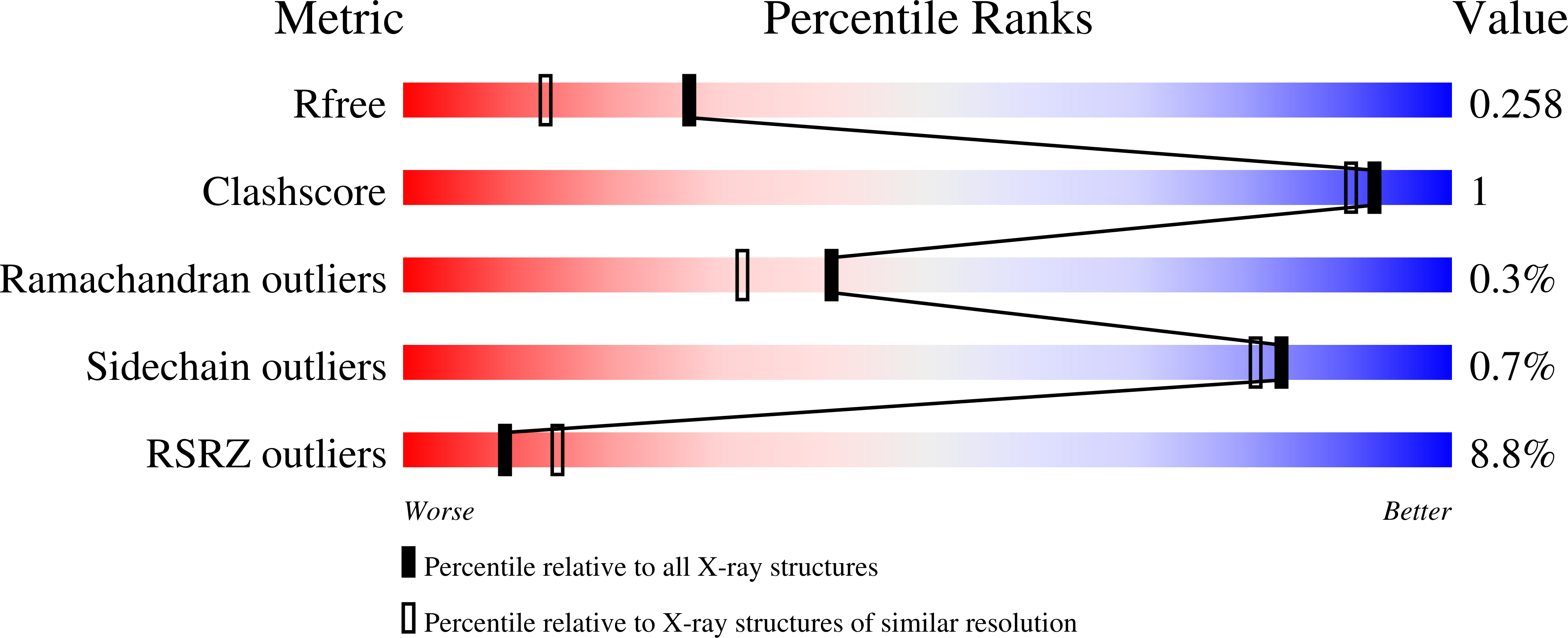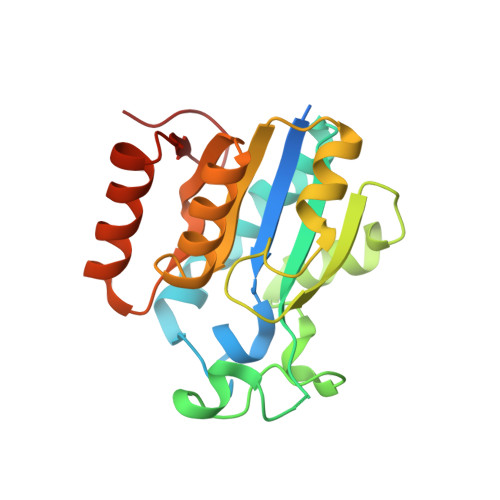High-resolution crystal structures of Streptococcus pneumoniae nicotinamidase with trapped intermediates provide insights into the catalytic mechanism and inhibition by aldehydes .
French, J.B., Cen, Y., Sauve, A.A., Ealick, S.E.(2010) Biochemistry 49: 8803-8812
- PubMed: 20853856
- DOI: https://doi.org/10.1021/bi1012436
- Primary Citation of Related Structures:
3O90, 3O91, 3O92, 3O93, 3O94 - PubMed Abstract:
Nicotinamidases are salvage enzymes that convert nicotinamide to nicotinic acid. These enzymes are essential for the recycling of nicotinamide into NAD(+) in most prokaryotes and most single-cell and multicellular eukaryotes, but not in mammals. The significance of these enzymes for nicotinamide salvage and for NAD(+) homeostasis has stimulated interest in nicotinamidases as possible antibiotic targets. Nicotinamidases are also regulators of intracellular nicotinamide concentrations, thereby regulating signaling of downstream NAD(+)-consuming enzymes, such as the NAD(+)-dependent deacetylases (sirtuins). Here, we report several high-resolution crystal structures of the nicotinamidase from Streptococcus pneumoniae (SpNic) in unliganded and ligand-bound forms. The structure of the C136S mutant in complex with nicotinamide provides details about substrate binding, while a trapped nicotinoyl thioester in a complex with SpNic reveals the structure of the proposed thioester reaction intermediate. Examination of the active site of SpNic reveals several important features, including a metal ion that coordinates the substrate and the catalytically relevant water molecule and an oxyanion hole that both orients the substrate and offsets the negative charge that builds up during catalysis. Structures of this enzyme with bound nicotinaldehyde inhibitors elucidate the mechanism of inhibition and provide further details about the catalytic mechanism. In addition, we provide a biochemical analysis of the identity and role of the metal ion that orients the ligand in the active site and activates the water molecule responsible for hydrolysis of the substrate. These data provide structural evidence of several proposed reaction intermediates and allow for a more complete understanding of the catalytic mechanism of this enzyme.
Organizational Affiliation:
Department of Chemistry and Chemical Biology, Cornell University, Ithaca, New York 14853, USA.















